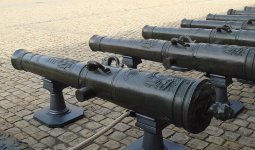Dear Jeroen ,
I am an Italian collector and modelist. I have almost all the Nurnberger Meisterzinn moulds and often use them but I agree often they are difficolt to employ as metal does not flow easily in aluminium. I noted that it is much more easier to have good casting using lead instead of the normal alloys; for example, I had good casting from the mould 1332 (musicians and instruments) only with pure lead (but using pure lead you are going to have thin particulars too flimsy). About piercing little holes in the mould, may be it is a good idea but till now I did not test it. I think it is good for you an article by Claus Mogensen , published on the Danish magazine Chakoten, n.2, June 2003 (Danish Society of Military History), where you may found some useful information about problems in moulding with Nurnberger Meisterzinn moulds. The article is available on the net, and bears the title "Castings of Prince August and others".
By the way, in mr.Mogensen opinion some hole 1mm diameter where metal does not arrive may help, but recastings remain too many. He advises to use the first good casting for a good remoulding with silicon rubber: I am going to use this extreme measure with the mould 1332, that is really difficult to use, almost for me.
Any way, your mould 1001 is not a very difficult one: I used it several times, without big problems: you may try to increase the percentage of lead in the alloy, similarly to what mr Mogensen writes: he use 3/4 lead and 1/4 tipographic alloy, that means a high percentage of lead without so much flimsyness of slim parts (I think the slimmest part of the elements of your mould are the beams of the wheels, being not so prone to bending for their shape).
Of course, you may buy a Prince August rubber mould for your cannon, easier to employ, but the Nurnberger Meisterzinn cannon looks much better.
I will be happy to know you have successed in the job (I practice it by fifty years!)
Lucio


